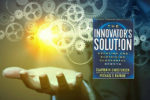The Intelligent Entrepreneur

The Intelligent Entrepreneur by Bill Murphy Jr.
This book tells the stories of three Harvard Business School graduates (Marc Cenedella, Chris Michel, and Marla Malcom) who founded several successful businesses. Chapters describing the founders’ lives and business pursuits alternate with a ten rules of “intelligent entrepreneurship”.
Key themes include thinking big, asking “who cares?” about customer needs, finding the right partners, managing risk, and adjusting your course if needed.
Jim Murphy illustrates each of his ten principles with interleaved stories of the challenges faced by the three 1998 HBS grads. The three successful entrepreneurs are shown to overcome difficult obstacles by relying on deep conviction in their enterprises and strong networks. The importance of a strong social network is a theme throughout the book and one of the key reasons for attending a leading business school like HBS.
Marc Cenedella founded theladders.com after running an import/export company prior to enrolling in HBS. Chris Michel started military.com and then used the model to create Affinity Labs which he sold to monster.com, the same company which bought military.com. Marla Malcom started bluemercury, a cosmetics business which initially was planned to be a purely on-line offering, but which she ultimately began by purchasing EFX, a local two-store cosmetics business.
Entrepreneurship is the pursuit of opportunity without regard to resources currently controlled.
Murphy’s ten rules are:
- Make the commitment
- Find a problem, then solve it
- Think big, think new, think again
- You can’t do it alone
- You must do it alone
- Manage risk
- Learn to lead
- Learn to sell
- Persist, persevere, prevail
- Play the game for life
Murphy believes that entrepreneurship can be learned (which is largely why it is taught at HBS). He starts by pointing out that entrepreneurship requires a tremendous amount of commitment because it is very difficult and requires all one’s talents and resources. Perseverance is one of the key traits that all three founders share and is a common theme throughout all of Murphy’s rules.
Part of what we try to teach the students is the importance of knowing the economic model of the business, and understanding whether there is a compelling need
Innovation usually comes from either bringing a new technology to an industry or coming up with a new business model.
Identifying a real problem and asking “who cares?’ is a key contributing factor for entrepreneurial success. Moreover, for all three businesses profiled in the book, their founders had a high level of interest in the business they were starting. Murphy quotes HBS professor Howard Stevenson as saying “Part of the reason that you have a lot of failures in technology startups is that the founders don’t know the marketplace. They may know the technology, but often there is no compelling need for the customer to buy.” Likewise, Noam Wasserman is quoted as saying “Making sure you are solving a real customer problem is something that differentiates entrepreneurs.”
Thinking big and the ability to see beyond the current circumstances are important principles for entrepreneurs because using those themes allows you to scale your idea. These two themes are amplified throughout the book in many ways. In many cases, all three entrepreneurs brought an outsider’s view to bear on the problem and trained themselves scale up their own expectations of what they could accomplish. The founders each had a unique blend of humility, objectivity, and Olympian aspiration.
Much has been written in business books about the need for ideas and execution. Many entrepreneurs are “ideas people”, but may not necessarily have the leadership or practical operational skills to run a company. Murphy shows the three founders growing the kernels of their initial ideas and developing leadership skills along the way. Facing challenges such as hiring, layoffs, and establishing high performance teams, each founder grows along multiple dimensions.
Murphy draws parallels between the HBS curriculum and the experiences of the three founders. Identifying a clear need, understanding the customer, and understanding the business are the foundation of entrepreneurial success. Asking “who cares?” about the problem being addressed is an important checkpoint as well as determining whether you have identified a specific pain point.
Expanding on the “who cares” theme, Murphy outlines four core questions to ask when evaluating an opportunity:
- will customers care?
- will investors care?
- will the market care?
- is there a ready market for the product or solution you’ve chosen?
…what entrepreneurs do is manage the risk they take, in part by allocating the risk to other players who are better able to manage it.
After discussing idea generation, Murphy covers risk, an area that entrepreneurs are assumed to have a high degree of comfort with. The three founders profiled in the book approached risk by focusing on the bottom line, raising money, and being frugal. Murphy also examines each entrepreneur’s leadership journey as their businesses became more successful and as they faced challenges they for which were not initially prepared. Finally, Murphy illustrates the many ways in which each entrepreneur “pivoted” and changed the direction of their business, and, in the process, largely reinvented themselves and their skills as they met new challenges to their ventures.






